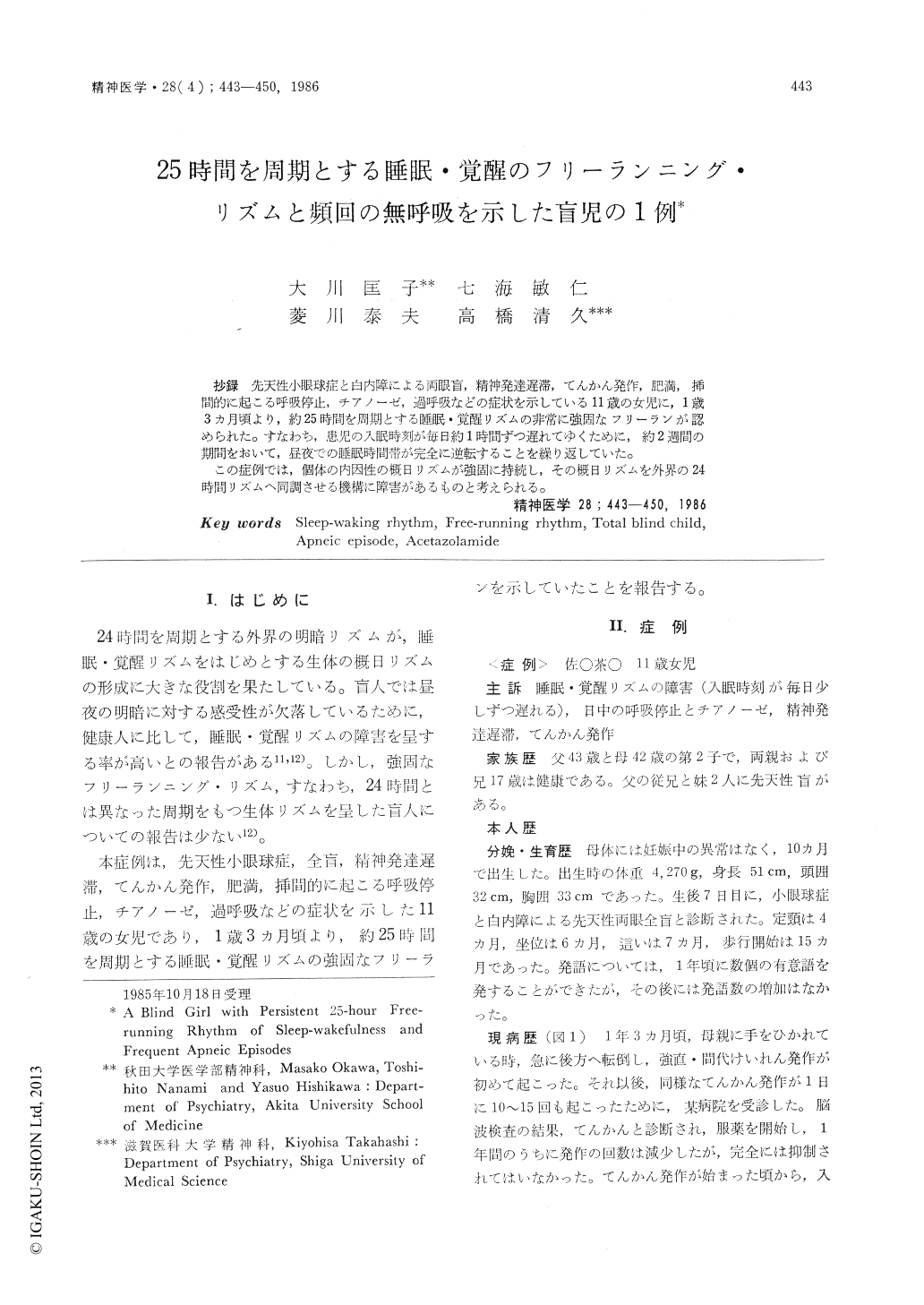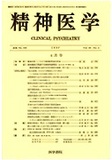Japanese
English
- 有料閲覧
- Abstract 文献概要
- 1ページ目 Look Inside
抄録 先天性小眼球症と白内障による両眼盲,精神発達遅滞,てんかん発作,肥満,挿間的に起こる呼吸停止,チアノーゼ,過呼吸などの症状を示している11歳の女児に,1歳3カ月頃より,約25時間を周期とする睡眠・覚醒リズムの非常に強固なフリーランが認められた。すなわち,患児の入眠時刻が毎日約1時間ずつ遅れてゆくために,約2週間の期間をおいて,昼夜での睡眠時間帯が完全に逆転することを繰り返していた。
この症例では,個体の内因性の概日リズムが強固に持続し,その概日リズムを外界の24時間リズムへ同調させる機構に障害があるものと考えられる。
A 10-year-old blind girl was admitted to Akita University Hospital on October, 1983 because of her sleep-waking disorder and frequent apneic episodes with cyanosis.
Her parents were healthy and unrelated. She was born in a fullterm and in normal delivery. She had congenital blindness due to microphthalmus and cataracta of both eyes. Otherwise, she appeared normal and started walking at 14 months of age. At 15 months of age, she began to have epileptic tonic and clonic convulsions. The convulsion was frequent for 1.5 years in spite of medication. Her mother noticed that she went to sleep an hour later day by day. She had been awake at night and slept in the daytime several days within a month. She had no seizure after the age of 2 years and 9 months. The sleep disorder continued after the seizure subsided. At 6 years of age, she attended a preschool for blind children. During the school period, the mother precisely recorded the sleep-waking pattern of this girl every day, and noticed that she fell asleep and woke up about one hour later every day, which was an about 25-hour free-running rhythm of sleep-waking. She could not attend school during the period of sleeping in the daytime. In order to correct the disorder of her sleep-waking rhythm, her mother and school teachers tried to interfere with sleep-waking cycle by forced awakening. However, the trial was unsuccessful. At 8 years of age, her grand mal seizure reappeared. On that time she began to have frequent apneic episodes with cyanosis every 2 to 3 min in the waking state, which made it more difficult for her to attend school.
On admission to Akita University Hospital, she was 145 cm tall and weighted 64 kg, and showed no gross deficit in motor function. The psychomotor development was estimated between 1 and 2 years.
In order to make her obtain the usual 24-hour rhythm of sleep-waking, 1) photo-therapy (illumination of 2,000-lux for an hour), 2) restricted feeding, and 3) forced awakenig were tried. But these trials were ineffective. For frequent apneic episodes with cyanosis, acetazolamide was found to be very effective.
Her 25-hour rhythm of sleep-waking was considered as her own endogenous rhythm, and it might be caused by disorders in the mechanism synchronizing the endogenous rhythm to the 24-hour rhythm in the external environment.

Copyright © 1986, Igaku-Shoin Ltd. All rights reserved.


